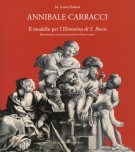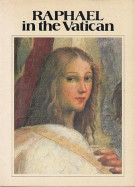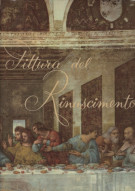Annibale Carracci Il modello per l'Elemosina di S. Rocco Ricostruzione critica per una storia in bianco e nero
| Author(s) | Maria Letizia Paoletti | ||
| Editor | Andreina & Valneo Budai Editori | Place | Roma |
| Year | 2013 | Pages | 110 |
| Measure | 25x29 (cm) | Illustration | ill. a colori e b/n n.t. - colors and b/w ills |
| Binding | bross. ill. a colori - paperback | Conservazione | Nuovo - New |
| Language | Italiano/Inglese - Italian/English text | Weight | 700 (gr) |
| ISBN | 8890464488 | EAN-13 | 9788890464485 |
| price | 40.00 € | discount | 50% |
| discount price | 20.00 € | ||
Add to cart
Prefazione di Andrea Emiliani, Jadranka Bentini.
La storia dell'importante ritrovamento del modello per l'Elemosina di S.Rocco di Annibale Carracci, dipinto fondamentale per la Storia dell'arte italiana, è in questo libro documentata con abbondanza di ricerche e prove oggettive, in una sorta di investigazione proiettata tra la fine del '500 e tutto l'arco del'600. Con occhio logico e deduttivo l'autrice ci restituisce una convincente ricostruzione della lunga genesi del dipinto e del successivo percorso collezionistico, alla luce dei caratteri dei protagonisti della vicenda, ripartendo dalle prove oggettive che scaturiscono dai messaggi fisico-tecnici che i dipinti manifestano dopo molti secoli di naturali alterazioni. É infatti ormai accettato che lo studio sistematico delle caratteristiche fisiche dei dipinti antichi aiuta notevolmente la ricerca deduttiva e documentale, finalizzata ad una giusta collocazione nella storia dell'arte e di conseguenza al recupero delle opere, spesso notevolmente alterate all'occhio umano da pesanti restauri succedutisi attraverso i secoli.
Gli anni della crescita artistica di Annibale Carracci fanno da sfondo alla commissione dell'Elemosina di S.Rocco per l'oratorio omonimo di Reggio Emilia, rivelandosi sotto una luce più umana e meno cristallizzata dalle grandi teorie della letteratura artistica. Dalla commissione del grande quadro alla sua realizzazione si assiste in soli sette anni alla trasformazione dell' artista da ragazzo taciturno, un po' scontroso ed alquanto altezzoso a pittore affermato, chiamato a Roma dal Cardinale più potente della corte Papale a dipingere un'impresa destinata a rimanere nella Storia al pari della Cappella Sistina.
Il libro, pertanto, oltre a presentare al pubblico un'opera fondamentale di Annibale Carracci altrimenti sconosciuta e definita dagli studiosi "il manifesto della riforma carraccesca", è anche una ragionata esposizione di un metodo di ricerca. L'autrice con questo lavoro rivendica un ruolo di primo piano per la Storia dell'Arte, basata sulla ricostruzione storica di fatti, documenti e testimonianze. L' analisi estetica, d'altra parte, quando non si tramuta in mera esercitazione retorica, ricopre un ruolo, necessario sì, ma non sufficiente, pur sempre al servizio della storia.
Annibale Carracci
The model for the Elemosina di S.Rocco
Critical research and historical reconstruction for a black and white story
Foreword by Andrea Emiliani, Jadranka Bentini.
The story of the important discovery of the model for the Almsina di San Rocco by Annibale Carracci, a fundamental painting for the history of Italian art, is documented in this book with an abundance of research and objective evidence, in a sort of investigation projected between the end of the 1500s and the whole of the 1600s. With a logical and deductive eye, the author gives us a convincing reconstruction of the long genesis of the painting and of the subsequent collection path, in the light of the characters of the protagonists of the story, starting from the objective proofs that arise from the physical-technical messages that the paintings manifest after many centuries of natural alterations. In fact, it is now accepted that the systematic study of the physical characteristics of ancient paintings greatly helps deductive and documentary research, aimed at a correct placement in the history of art and consequently at the recovery of the works, often considerably altered to the human eye by heavy restorations. succeeded each other over the centuries.
The years of Annibale Carracci's artistic growth are the background to the commission of the Elemosina di San Rocco for the oratory of the same name in Reggio Emilia, revealing itself in a more human and less crystallized light by the great theories of artistic literature. From the commission of the large painting to its realization, in just seven years, we witness the transformation of the artist from a taciturn, somewhat surly and somewhat haughty boy to an established painter, called to Rome by the most powerful Cardinal of the Papal court to paint a company destined to remain in history like the Sistine Chapel.
The book, therefore, in addition to presenting to the public a fundamental work by Annibale Carracci otherwise unknown and defined by scholars as "the manifesto of the Carraccesque reform", is also a reasoned exposition of a research method. With this work, the author claims a leading role for the History of Art, based on the historical reconstruction of facts, documents and testimonies. Aesthetic analysis, on the other hand, when it is not transformed into a mere rhetorical exercise, plays a role, necessary, yes, but not sufficient, yet always at the service of history.
Note alle condizioni del volume
Nessuna (T-CALCFL)
Recommended books...





